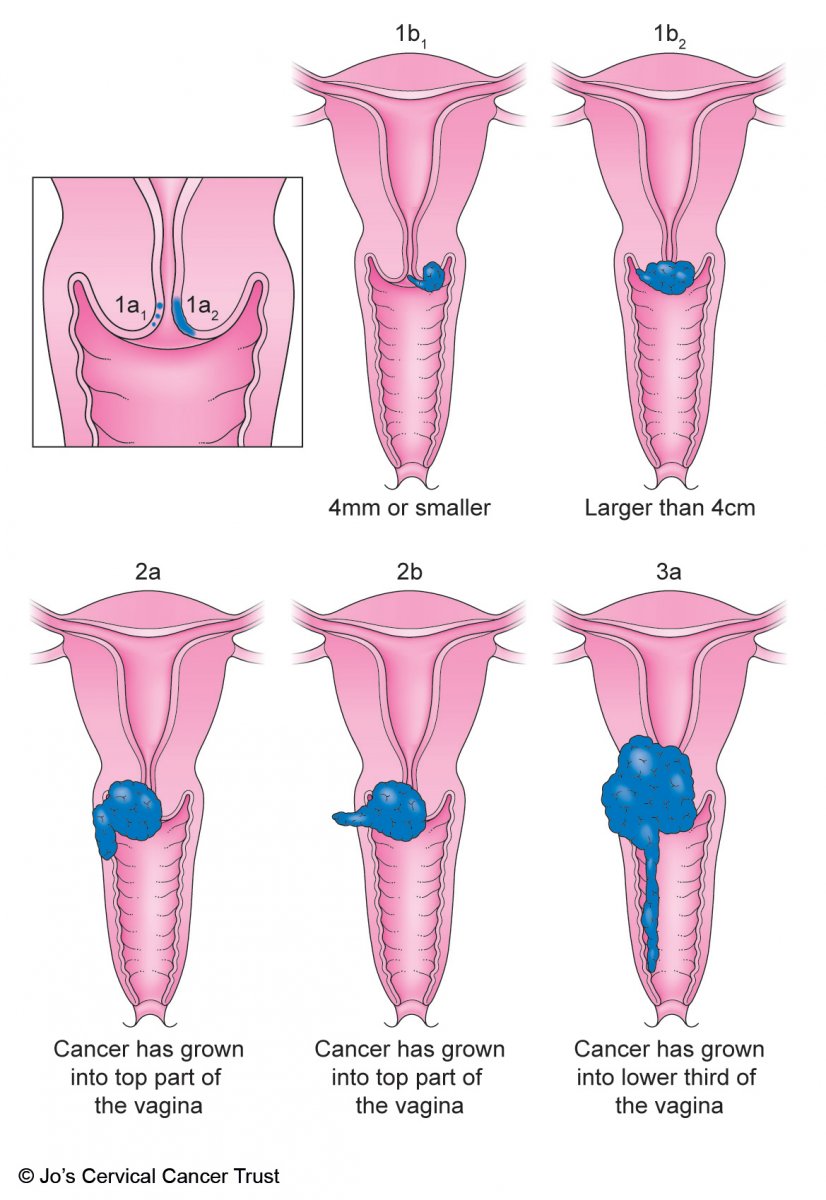There are no products in your shopping cart.
| 0 Items | £0.00 |
If you have questions or need to talk, call our helpline for information or support.
Have a question? Receive a confidential response via email.
Come to a support event to meet other people who have had a cervical cancer diagnosis.
Connect with others, share experiences and ask questions on our forum.
Individual support via phone or email, for anyone affected by a cervical cancer diagnosis.
Read about ways to cope with any effects of treatment and getting practical support.
The grade of a cervical cancer describes how quickly the cancer might grow or spread. The stage describes its size and how far it has spread.
If you are having lots of tests or have been told the grade and stage, you may feel overwhelmed with information, confused about what you are being told or worried about what it means. We are here to help you navigate all of this, whether you want to discuss next steps or simply have someone listen.
On this page:
Your healthcare team will look at the stage and grade of the cancer to help decide what treatment is suitable for you.
The grade shows:
The stage shows:
Read about making treatment decisions >
A pathologist or histopathologist is an expert on how diseases work in the body. They will look at your cells under a microscope to give the cells a grade from 1 to 3:
When cancer develops, the cancer cells grow and multiply and form a tumour. The tumour will start off small and contained within a small area – this is an early stage. The tumour can grow larger and spread to areas nearby – which you might hear being called ‘locally advanced’. Eventually, cancer can spread to other areas in the body, this is an advanced stage.
The FIGO staging system was updated in 2018. If you were diagnosed with cervical cancer before this, the stage may be different to those below. We know you might be worried or have questions – it is best to speak with your hospital healthcare team, who can explain the changes.
Cervical cancer is given a stage from 1 to 4.
The cancer is only in the cervix. It hasn’t spread to the surrounding tissue, nearby organs, or anywhere else in the body.
The cancer is small and can only been seen with a microscope.
The cancer is slightly bigger and may be seen without a microscope.
The cancer has spread a small way outside of the cervix.
The cancer has spread into the top of the vagina.
The cancer has spread into the top of the vagina and into the tissue.
The cancer may have spread into the lower part of the vagina, the pelvic wall, or the lymph nodes. It may also cause the kidneys to swell (hydronephrosis) or stop working properly.
The cancer has spread to the lower part of the vagina, but not the pelvic wall.
The cancer has spread to the pelvic wall, or has caused the kidneys to swell or stop working properly.
The cancer has spread to the lymph nodes.
The cancer has spread to the bladder, back passage (rectum) or to further areas of the body.

Your healthcare team might also use the terms early stage, locally advanced, or advanced cervical cancer. It is important to ask them what they mean by these terms, but here is a rough guide:
Some healthcare professionals use ‘stage 0’ to describe changes to cells in the cervix (abnormal cells). This can be confusing, as cell changes are not cancer. Stage 0 may also be called cervical intraepithelial neoplasia 3 (CIN3) or, less commonly, carcinoma in situ (CIS).
If you have a type of cancer called small cell cervical cancer, they might use a slightly different system which is used for small cell lung cancer. The stage will be called:
The FIGO staging system used for cervical cancer was updated in 2018. If you were diagnosed with cervical cancer before this, the stage may be different to the ones we describe on this page.
We know you might be worried or have questions about this change. It is best to speak with your hospital healthcare team, who can explain the changes.
Grading and staging can be confusing, so it’s important to take the time you need to understand everything – remember that your healthcare team are there if you have any questions.
We are here for you too. Our trained volunteers can listen and help you understand what’s going on via our free Helpline on 0808 802 8000.
Check our Helpline opening hours >
Sometimes connecting with others who have gone through a similar experience can be helpful. Our online Forum lets our community give and get support. You can read through the messages or post your own – whichever feels most comfortable.
Find out about different treatment types.

Talk to someone about how you’re feeling, or connect with others on our Forum.

